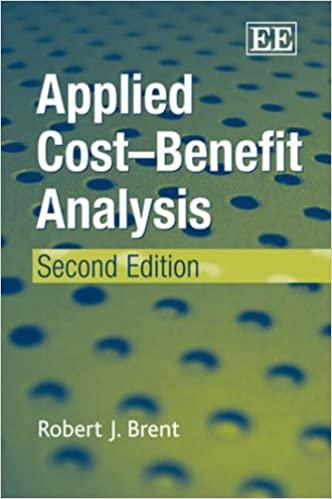Question
Kitchen Supply, Inc. (KSI), manufactures three types of flatware: institutional, standard, and silver. It applies all indirect costs according to a predetermined rate based on
Kitchen Supply, Inc. (KSI), manufactures three types of flatware: institutional, standard, and silver. It applies all indirect costs according to a predetermined rate based on direct labor-hours. A consultant recently suggested that the company switch to an activity-based costing system and prepared the following cost estimates for year 2 for the recommended cost drivers.
| Activity | Recommended Cost Driver | Estimated Cost | Estimated Cost Driver Activity | ||||
| Processing orders | Number of orders | $ | 41,000 | 200 | orders | ||
| Setting up production | Number of production runs | 216,000 | 120 | runs | |||
| Handling materials | Pounds of materials used | 250,000 | 100,000 | pounds | |||
| Machine depreciation and maintenance | Machine-hours | 231,000 | 11,000 | hours | |||
| Performing quality control | Number of inspections | 59,850 | 45 | inspections | |||
| Packing | Number of units | 122,500 | 490,000 | units | |||
| Total estimated cost | $ | 920,350 | |||||
In addition, management estimated 7,100 direct labor-hours for year 2.
Assume that the following cost driver volumes occurred in January, year 2.
| Institutional | Standard | Silver | |||||||
| Number of units produced | 62,000 | 25,000 | 8,000 | ||||||
| Direct materials costs | $ | 38,000 | $ | 25,000 | $ | 17,000 | |||
| Direct labor-hours | 430 | 490 | 580 | ||||||
| Number of orders | 11 | 10 | 5 | ||||||
| Number of production runs | 4 | 2 | 6 | ||||||
| Pounds of material | 17,000 | 6,000 | 3,200 | ||||||
| Machine-hours | 590 | 150 | 80 | ||||||
| Number of inspections | 4 | 3 | 3 | ||||||
| Units shipped | 62,000 | 25,000 | 8,000 | ||||||
Actual labor costs were $15 per hour.
Required:
a.
(1) Compute a predetermined overhead rate for year 2 for each cost driver using the estimated costs and estimated cost driver units prepared by the consultant. (2) Compute a predetermined rate for year 2 using direct labor-hours as the allocation base. b. Compute the production costs for each product for January using direct labor-hours as the allocation base and the predetermined rate computed in requirement a(2). c. Compute the production costs for each product for January using the cost drivers recommended by the consultant and the predetermined rates computed in requirement a. (Note: Do not assume that total overhead applied to products in January will be the same for activity-based costing as it was for the labor-hour-based allocation.)
Compute a predetermined overhead rate for year 2 for each cost driver using the estimated costs and estimated cost driver units prepared by the consultant. (Round your answers to 2 decimal places.)
| ||||||||||||||||||||||
Compute a predetermined rate for year 2 using direct labor-hours as the allocation base
|
Compute the production costs for each product for January using direct labor-hours as the allocation base and the predetermined rate computed in requirement a(2). (Do not round intermediate calculations.)
|
Step by Step Solution
There are 3 Steps involved in it
Step: 1

Get Instant Access to Expert-Tailored Solutions
See step-by-step solutions with expert insights and AI powered tools for academic success
Step: 2

Step: 3

Ace Your Homework with AI
Get the answers you need in no time with our AI-driven, step-by-step assistance
Get Started


